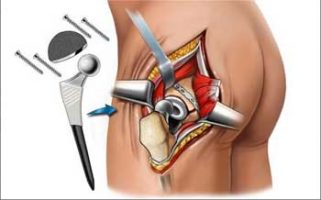- Home
- Editorial
- News
- Practice Guidelines
- Anesthesiology Guidelines
- Cancer Guidelines
- Cardiac Sciences Guidelines
- Critical Care Guidelines
- Dentistry Guidelines
- Dermatology Guidelines
- Diabetes and Endo Guidelines
- Diagnostics Guidelines
- ENT Guidelines
- Featured Practice Guidelines
- Gastroenterology Guidelines
- Geriatrics Guidelines
- Medicine Guidelines
- Nephrology Guidelines
- Neurosciences Guidelines
- Obs and Gynae Guidelines
- Ophthalmology Guidelines
- Orthopaedics Guidelines
- Paediatrics Guidelines
- Psychiatry Guidelines
- Pulmonology Guidelines
- Radiology Guidelines
- Surgery Guidelines
- Urology Guidelines
New Procedure which helps Patients Avoid Hip Replacement

Doctors at The Ohio State University Wexner Medical Center are using a procedure called Subchondroplasty to give patients with damaged hips more treatment options and ultimately avoid replacement surgery.
“We want to preserve the native hip whenever possible because once you have a hip replacement, there’s no going back,” said Dr. Kelton Vasileff, an orthopedic surgeon at Ohio State Wexner Medical Center. “We’re able to use a bone-hardening procedure that’s traditionally been used in knee surgery to help repair a patient’s own hip joint.”
During the procedure, a bone substitute material is injected into a small hole in the joint, filling any voids or lesions in the bone. Over the few years following surgery, a patient’s body replaces the bone-hardening material with their own healthy bone, leading to what Vasileff hopes are permanent repairs.
“In the past, a replacement would be the only long-term option for a lot of patients, but this procedure allows me to add support to the bone, making more damage-reversing surgeries possible,” said Vasileff, who specializes in hip preservation surgery.
Each year, more than 300,000 Americans receive a hip replacement. This major surgery requires months of physical rehabilitation, and there’s no guarantee the implant will last forever, especially in younger patients.
“There’s potentially a finite lifespan to some of these implants, as they are typically metal or ceramic on plastic articulations,” Vasileff said. “Problems with implants down the road could mean more surgery for these patients, and that’s always more difficult than doing it for the first time.”
Subchondroplasty is also much less invasive than a total hip replacement, which allows patients to get back on their feet sooner. Vasileff uses it in conjunction with other treatments to help patients preserve their native hip joint for as long as possible.
“There’s not a lot of procedures out there that help to regenerate the bone quite like Subchondroplasty does, so this helps to fill a gap in our treatment options for patients who have cartilage damage, labral tears or advanced degenerative changes in their hips,” Vasileff said.
Experts at Ohio State Wexner Medical Center say Subchondroplasty is also helpful for pregnant women who often suffer from temporary osteoporosis during their third trimester of pregnancy or after delivery. Without it, they’re often forced to use to crutches for months.
The Subchondroplasty Procedure was created by Zimmer Biomet of Warsaw, Ind.

Disclaimer: This site is primarily intended for healthcare professionals. Any content/information on this website does not replace the advice of medical and/or health professionals and should not be construed as medical/diagnostic advice/endorsement or prescription. Use of this site is subject to our terms of use, privacy policy, advertisement policy. © 2020 Minerva Medical Treatment Pvt Ltd